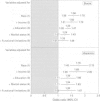Abstract
STUDY OBJECTIVE: To estimate relative odds ratios and to ascertain the relative contribution of each socioeconomic covariate in explaining racial disparities in self assessed health status (for example, global health perceptions and functional limitations of daily activities). DESIGN: National representative data from the 1987-88 national survey of families and households, a multistage, stratified probability sample of non-institutionalised American adults age 19 and older, were used. Logistic regression models enabled a multistage building strategy to be used in the analyses. PARTICIPANTS AND SETTING: The study included three racial groups: whites (n = 9419), blacks (n = 2391), and Hispanics (n = 1004). While face to face interviews were carried out with each respondent, some portions of the interview were self administered to collect sensitive information. MAIN RESULTS: Compared with whites, blacks and Hispanics were more likely to assess health as poor and report having functional limitations of daily activities. Socioeconomic factors tended to play a different role in explaining racial disparities in self assessed health status. In global health, education tended to play a significant role in accounting for health disparities between whites and Hispanics. In functional limitations, none of the covariates explained racial differences for blacks, whereas for Hispanics, education and marital status explained racial differences. CONCLUSIONS: The debate over whether race is a proxy for socioeconomic conditions or race influences health independent of socioeconomic factors depends on the measure of health and racial group included in the study. Future studies should examine separately the differential impacts of various socioeconomic factors on varying domains of health.
Full text
PDF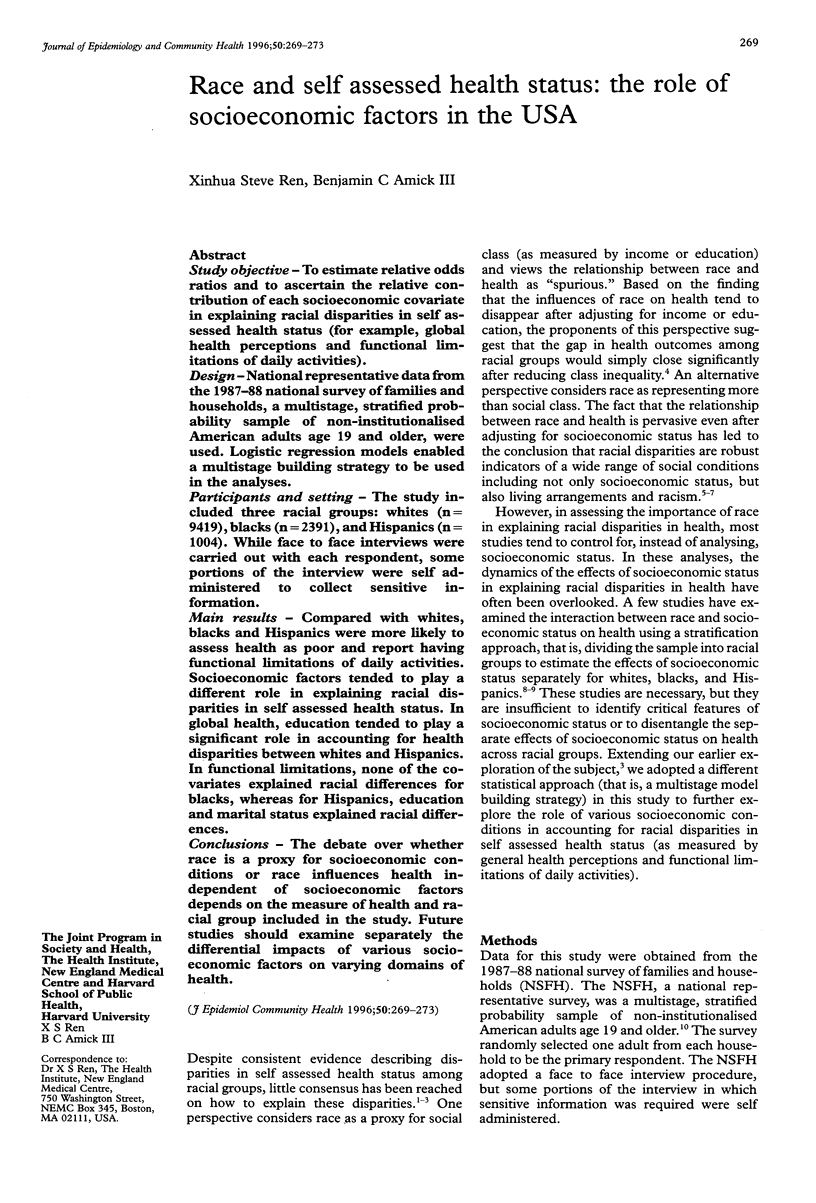
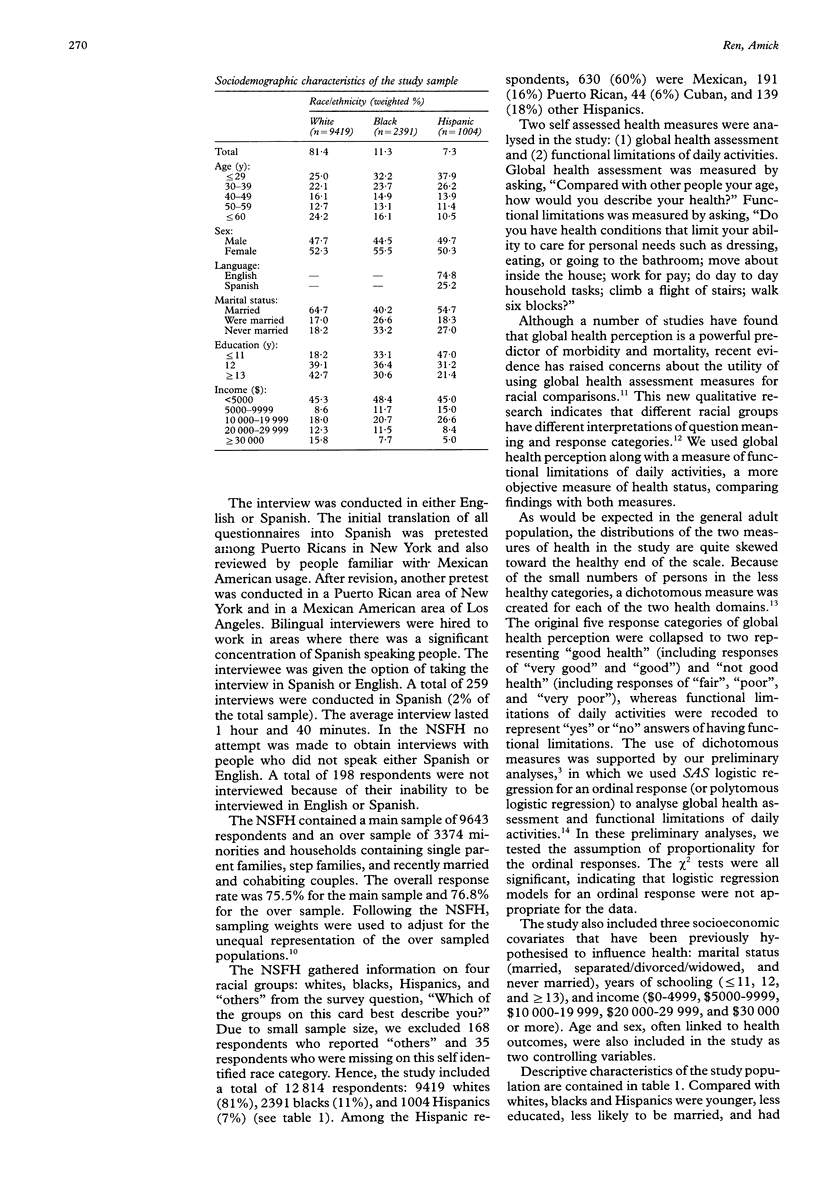
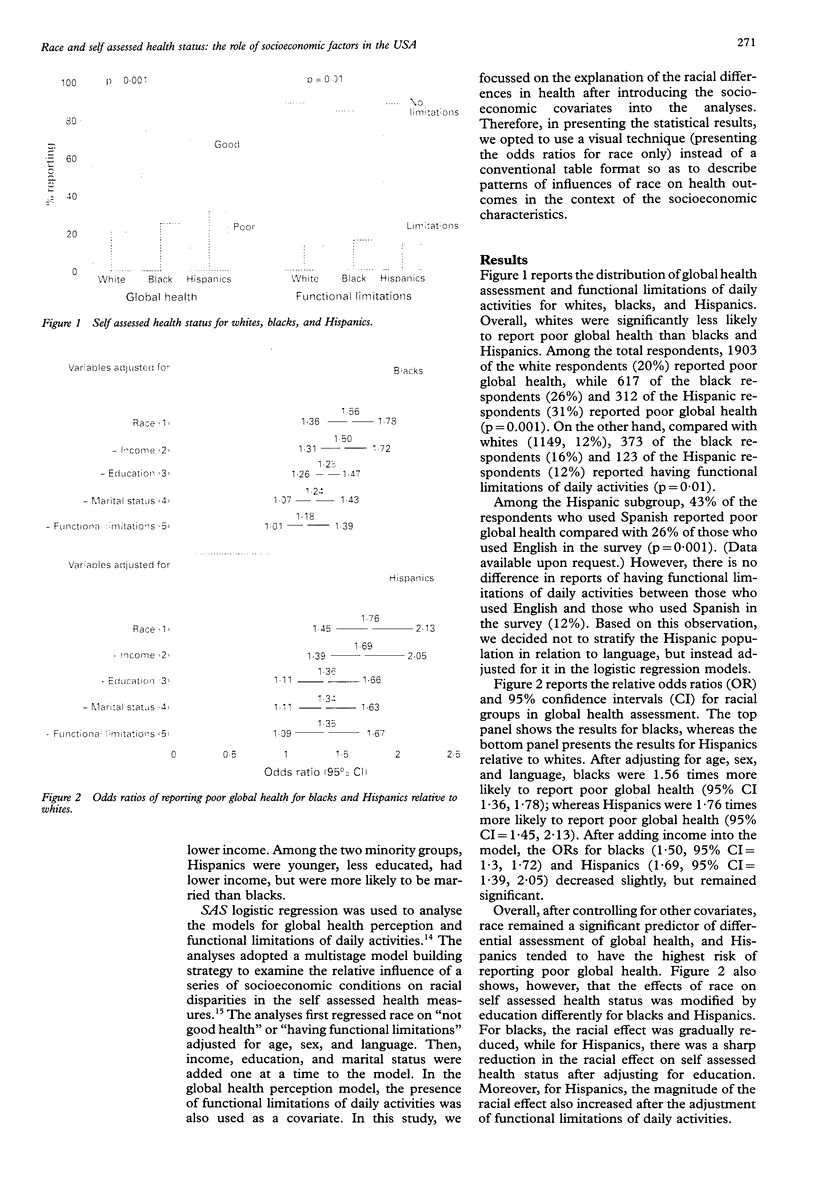
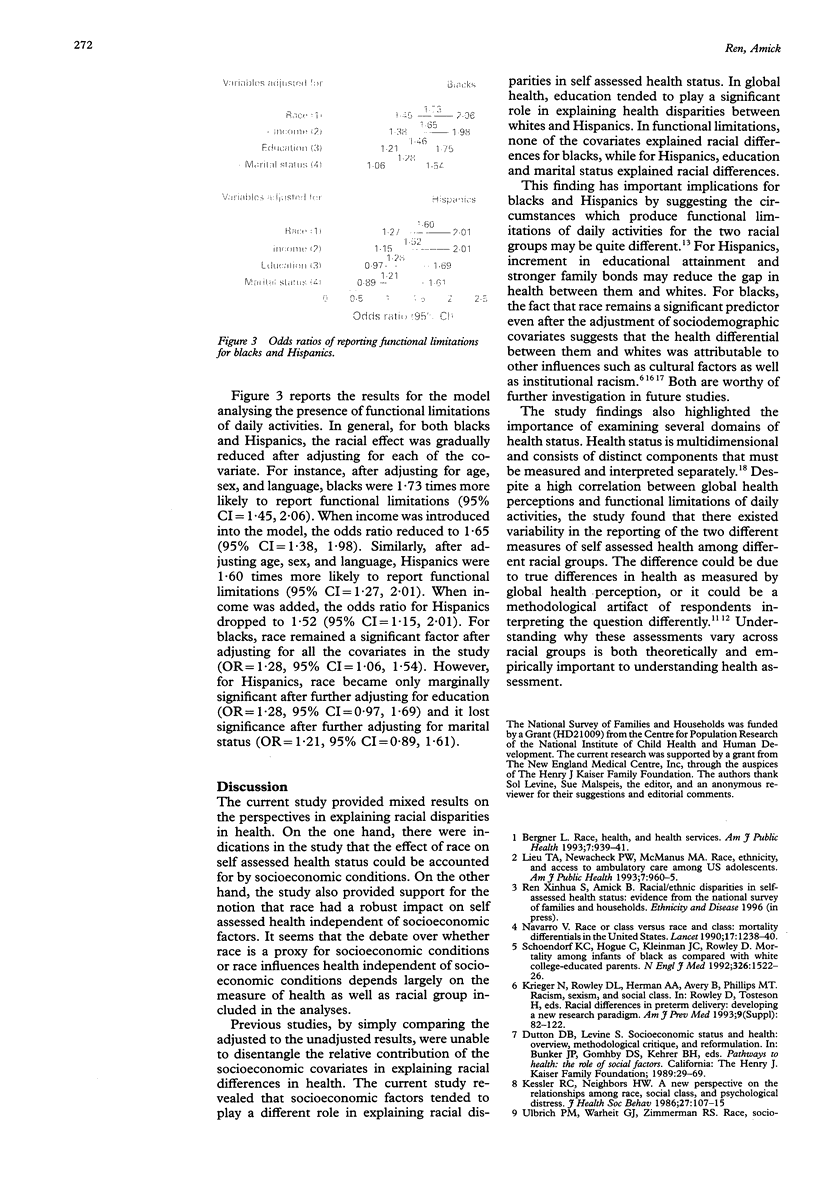
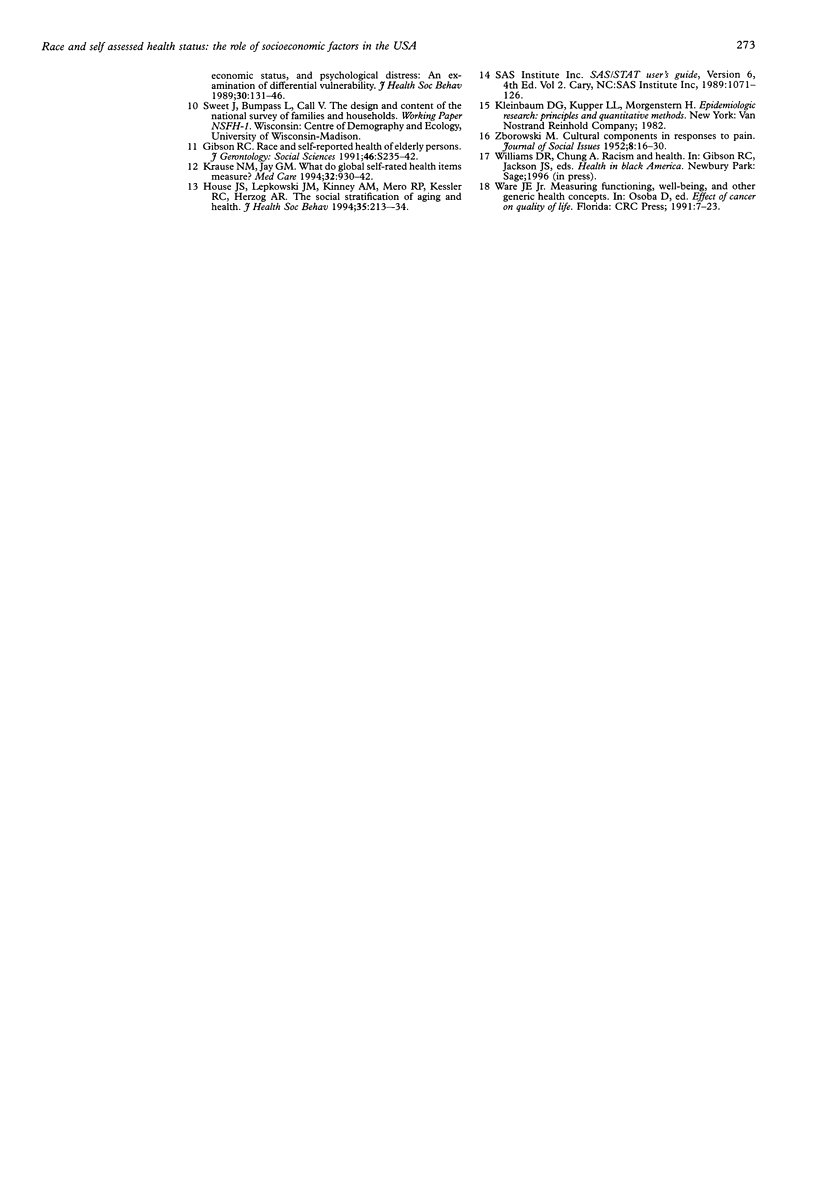
Images in this article
Selected References
These references are in PubMed. This may not be the complete list of references from this article.
- Bergner L. Race, health, and health services. Am J Public Health. 1993 Jul;83(7):939–941. doi: 10.2105/ajph.83.7.939. [DOI] [PMC free article] [PubMed] [Google Scholar]
- Gibson R. C. Race and the self-reported health of elderly persons. J Gerontol. 1991 Sep;46(5):S235–S242. doi: 10.1093/geronj/46.5.s235. [DOI] [PubMed] [Google Scholar]
- House J. S., Lepkowski J. M., Kinney A. M., Mero R. P., Kessler R. C., Herzog A. R. The social stratification of aging and health. J Health Soc Behav. 1994 Sep;35(3):213–234. [PubMed] [Google Scholar]
- Kessler R. C., Neighbors H. W. A new perspective on the relationships among race, social class, and psychological distress. J Health Soc Behav. 1986 Jun;27(2):107–115. [PubMed] [Google Scholar]
- Krause N. M., Jay G. M. What do global self-rated health items measure? Med Care. 1994 Sep;32(9):930–942. doi: 10.1097/00005650-199409000-00004. [DOI] [PubMed] [Google Scholar]
- Lieu T. A., Newacheck P. W., McManus M. A. Race, ethnicity, and access to ambulatory care among US adolescents. Am J Public Health. 1993 Jul;83(7):960–965. doi: 10.2105/ajph.83.7.960. [DOI] [PMC free article] [PubMed] [Google Scholar]
- Navarro V. Race or class versus race and class: mortality differentials in the United States. Lancet. 1990 Nov 17;336(8725):1238–1240. doi: 10.1016/0140-6736(90)92846-a. [DOI] [PubMed] [Google Scholar]
- Schoendorf K. C., Hogue C. J., Kleinman J. C., Rowley D. Mortality among infants of black as compared with white college-educated parents. N Engl J Med. 1992 Jun 4;326(23):1522–1526. doi: 10.1056/NEJM199206043262303. [DOI] [PubMed] [Google Scholar]




